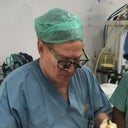Hello doctors, Story: I had a Drainless TT on 04/04, and on 04/09 I developed a seroma. PS aspirted it multiple times, then inserted drain, then scleoring agents 3 times, and nothing worked. I am now scheduled for surgery to remove the seroma. My PS is not experienced in this complication, as he said he's never seen a seroma this persistent. I am looking for experienced surgeons in seroma removals around my area, and prices for this type of procedure.
Answers (8)
From board-certified doctors and trusted medical professionals
More Tummy Tuck Questions
See all Tummy Tuck Q&AWE SEND PRETTY
EMAILS
What’s trending? Who’s turning heads? Which TikTok myths need busting? We’ve got you. No fluff, no gatekeeping—just real talk. Get our free, unfiltered newsletter.





